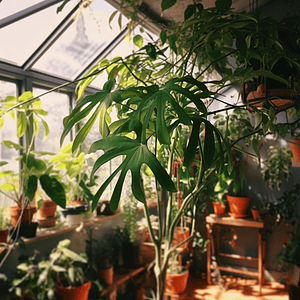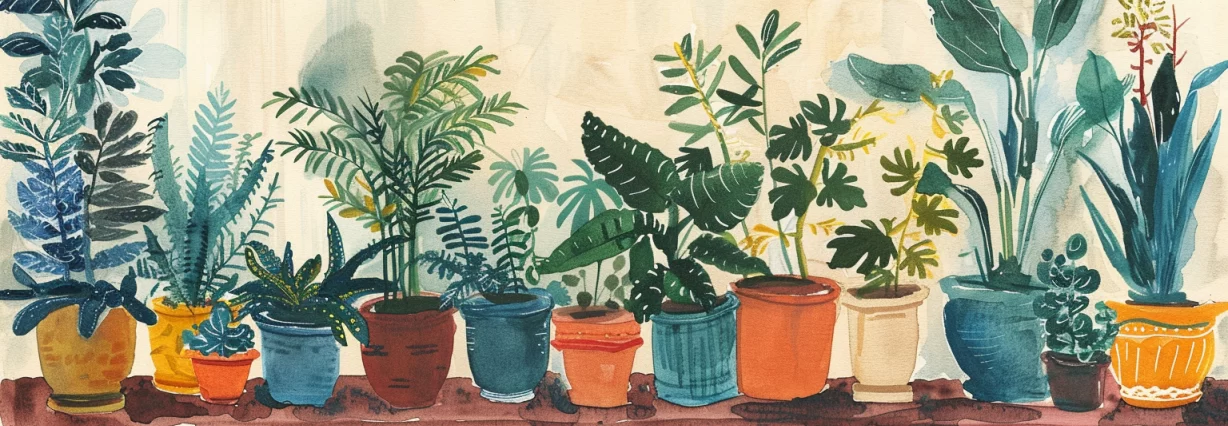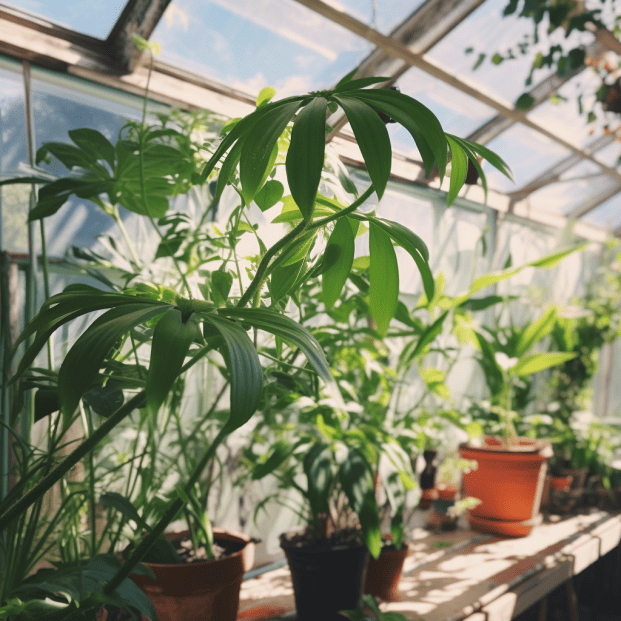Monstera subpinnata is a unique tropical vine that has become increasingly popular in recent years. Known for its palm-like foliage and fern-like pinnate leaves, this plant is a must-have for any collector. Native to Bolivia, Peru, Ecuador, and Colombia, the Monstera subpinnata can grow up to 12 meters tall and has leaves that can reach up to 40 cm long and 30 cm wide.
If you’re looking to add a touch of tropical greenery to your home or garden, the Monstera subpinnata is an excellent choice. With its unique fragmented leaves, this plant is a Monstera like no other and is sure to make a statement in any space. While the Monstera subpinnata may require some extra care compared to other houseplants, the effort is well worth it for the stunning results.
Overall, the Monstera subpinnata is an exciting and attractive plant that is sure to impress. Whether you’re a seasoned plant collector or just starting, this tropical vine is definitely worth considering. In this article, we’ll take a closer look at how to care for the Monstera subpinnata and answer some frequently asked questions about this unique plant.
Key Takeaways
- Monstera subpinnata is a tropical vine known for its unique fragmented leaves.
- This plant requires some extra care but is well worth the effort.
- In this article, we will explore how to care for the Monstera subpinnata and answer some frequently asked questions.
Overview
Monstera subpinnata is a tropical vine that is native to Bolivia, Peru, Ecuador, and Colombia. It is a unique plant that is known for its palm-like foliage and unusual pinnate growth pattern. The plant features alternating leaflets on either side of the leaf, which is in contrast to the usual fenestrated growth seen on Monstera plants.
Description
Monstera subpinnata is a beautiful plant that has large, showy pinnate leaves that look more fern-like than other Monstera plants. The leaves reach extraordinary sizes of up to 12 inches (30 centimeters) long and 8 inches (20 centimeters) wide. The plant can grow as tall as 12 m (39 ft), with leaves growing as large as 40 cm (16 in) long and 30 cm (12 in) wide.
Species
Monstera subpinnata is a species of flowering plant that belongs to the genus Monstera. It is part of the Araceae family, which includes other popular houseplants such as the philodendron and peace lily.
Care
Monstera subpinnata is a relatively easy plant to care for. It thrives in temperatures ranging from 55° – 80° F (12.7 to 26.7 degrees Celsius) and in lower light conditions. The plant prefers well-draining soil and should be watered when the top inch of soil is dry to the touch. The plant also benefits from occasional misting to increase humidity levels.
Propagation
Propagation of Monstera subpinnata can be done through stem cuttings. Cuttings should be taken from the stem just below a node and placed in a pot with well-draining soil. The cutting should be kept moist until roots have developed, which can take several weeks.
Common Problems
One common problem with Monstera subpinnata is root rot, which can occur if the plant is overwatered or if the soil does not drain properly. Another issue is spider mites, which can be treated with insecticidal soap or neem oil.
Growing Tips
To encourage healthy growth, Monstera subpinnata should be fertilized every 2-3 months during the growing season. The plant can also benefit from occasional pruning to remove dead or damaged leaves and to encourage new growth.
Frequently Asked Questions

How often should I water my Monstera subpinnata?
Monstera subpinnata prefers to be kept moist but not waterlogged. Overwatering can lead to root rot, so it’s important to let the top inch of soil dry out before watering. The frequency of watering will depend on the temperature and humidity of your environment, as well as the size of your plant and its pot. As a general rule, water your Monstera subpinnata once a week and adjust as needed.
What is the ideal temperature for Monstera subpinnata?
Monstera subpinnata thrives in warm temperatures between 65-85°F (18-29°C). It’s important to keep the plant away from cold drafts and extreme temperature fluctuations, which can cause stress and damage to the leaves.
How much sunlight does Monstera subpinnata need?
Monstera subpinnata prefers bright, indirect light. Direct sunlight can scorch the leaves, while too little light can cause stunted growth. Place your plant near a window that receives filtered light or use a sheer curtain to diffuse direct sunlight.
What type of soil is best for Monstera subpinnata?
Monstera subpinnata prefers well-draining, aerated soil. An aroid mix or a blend of peat moss, perlite, and orchid bark is ideal. Avoid using heavy, clay soils that retain too much moisture.
How do I propagate Monstera subpinnata?
Monstera subpinnata can be propagated through stem cuttings. Take a cutting that includes at least one node and one leaf, and place it in a jar of water or moist soil. Keep the cutting in a warm, humid environment and wait for roots to form before transplanting it into a pot.
What are common pests that affect Monstera subpinnata?
Monstera subpinnata can be susceptible to pests such as spider mites, mealybugs, and scale insects. Regularly inspect your plant for signs of infestation, such as webbing, sticky residue, or yellowing leaves. Treat any infestations promptly with insecticidal soap or neem oil.


